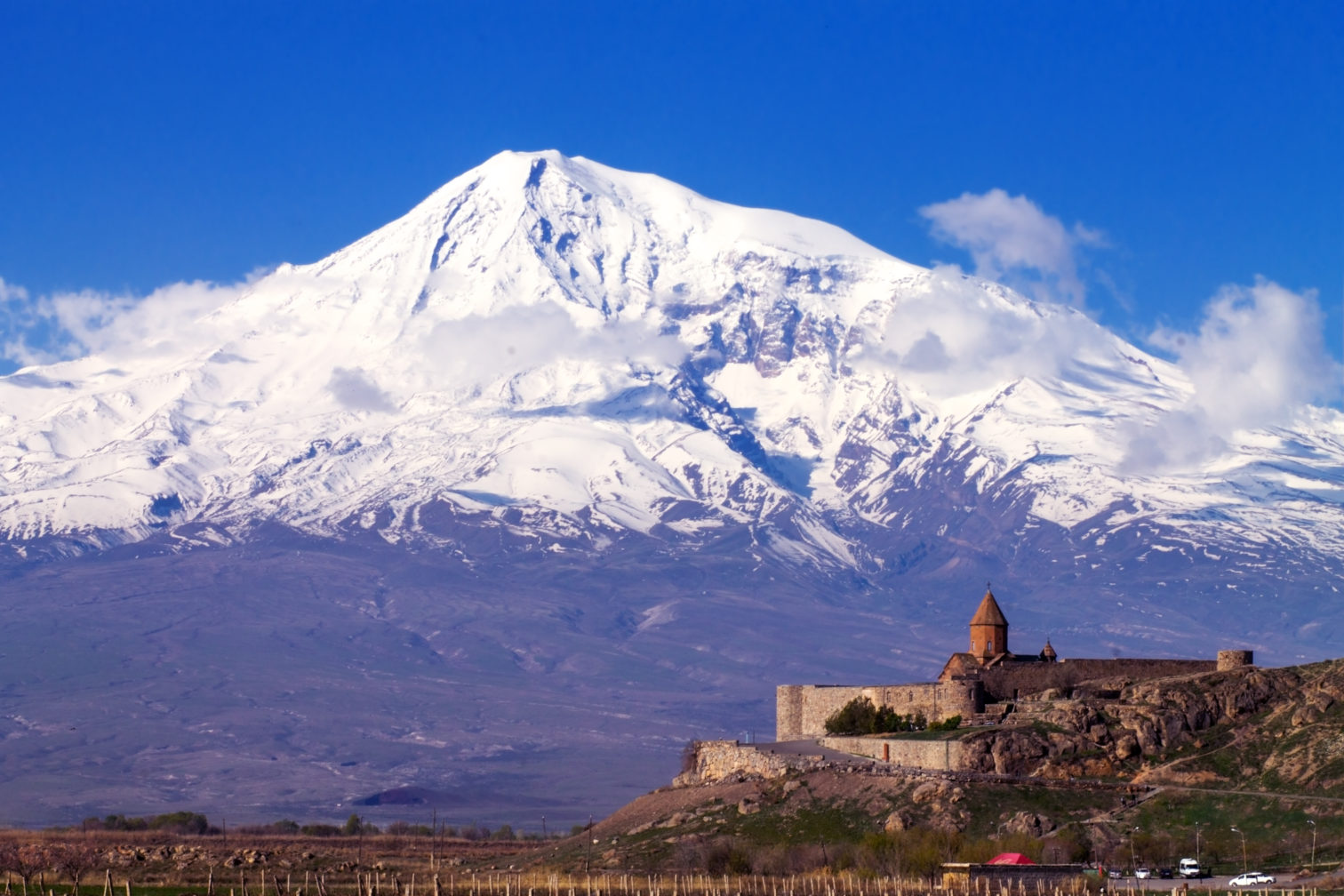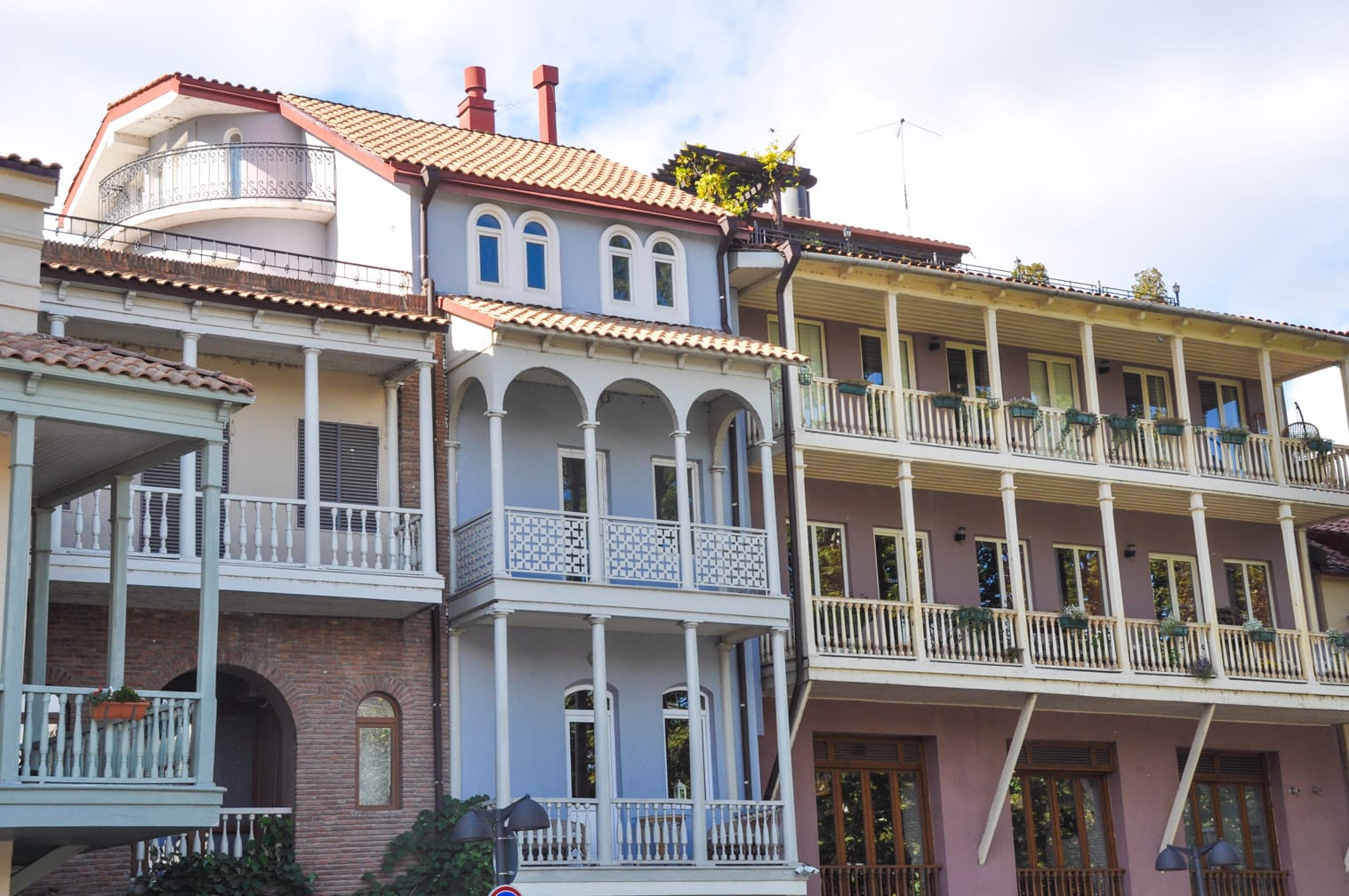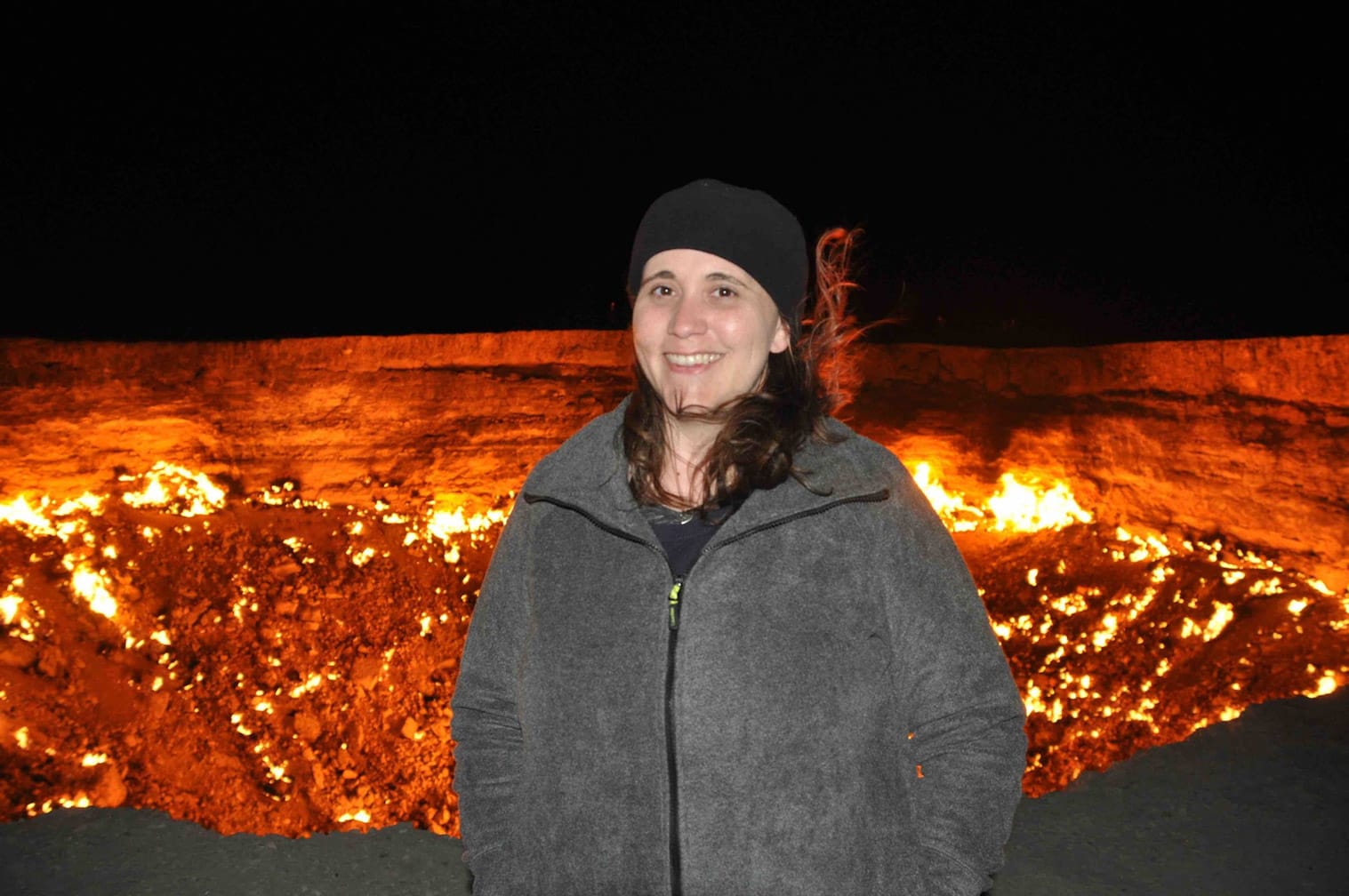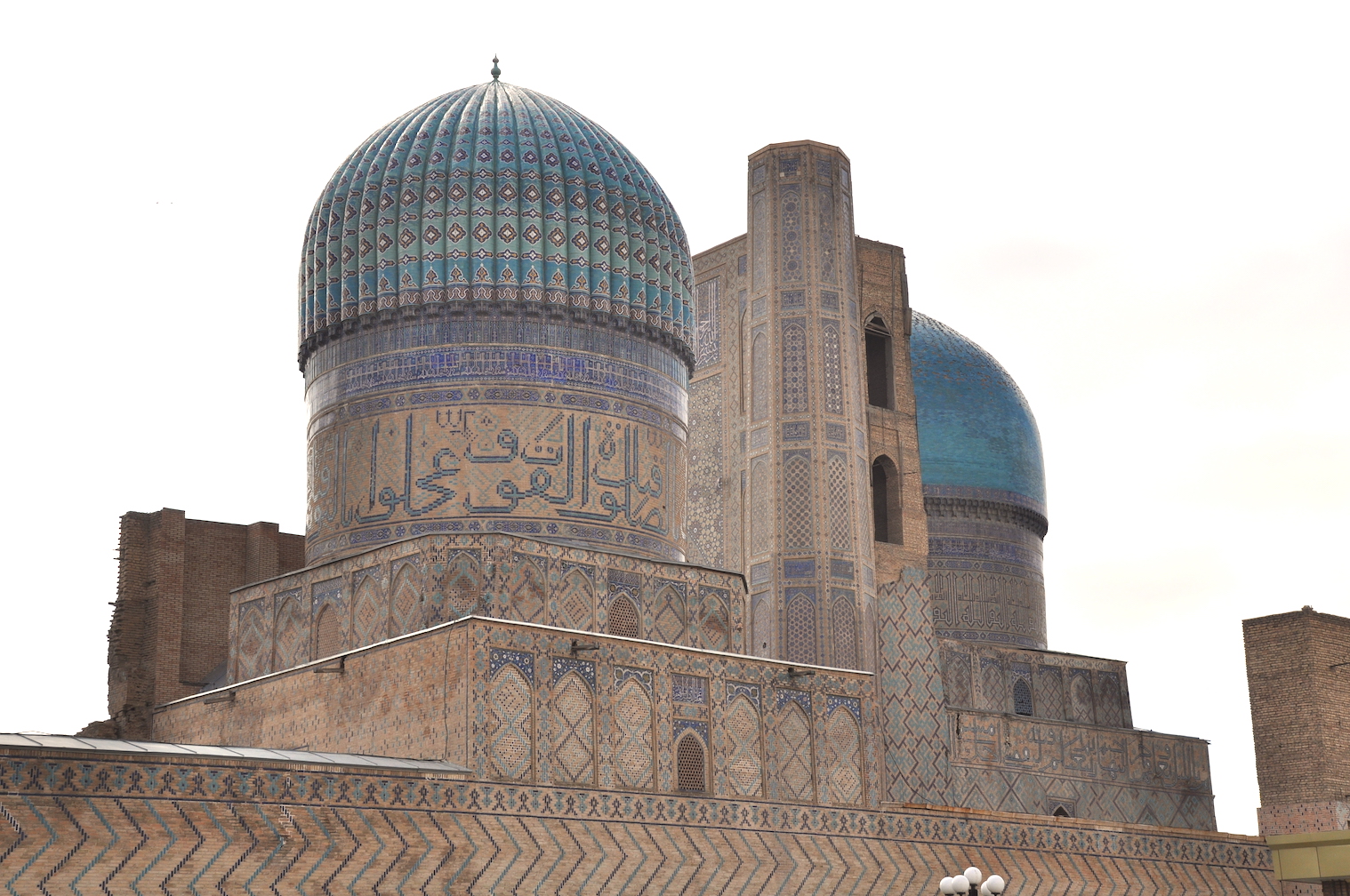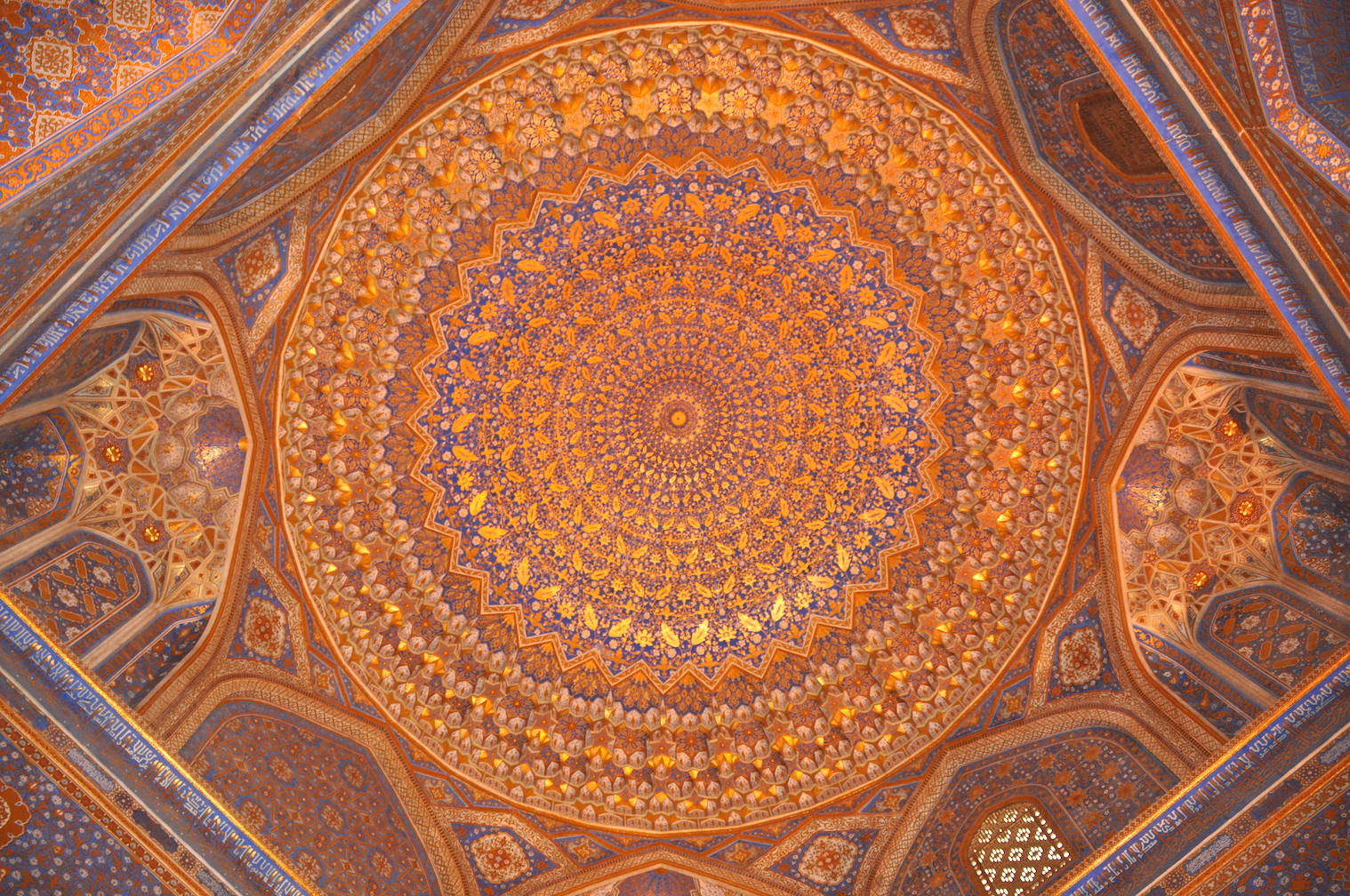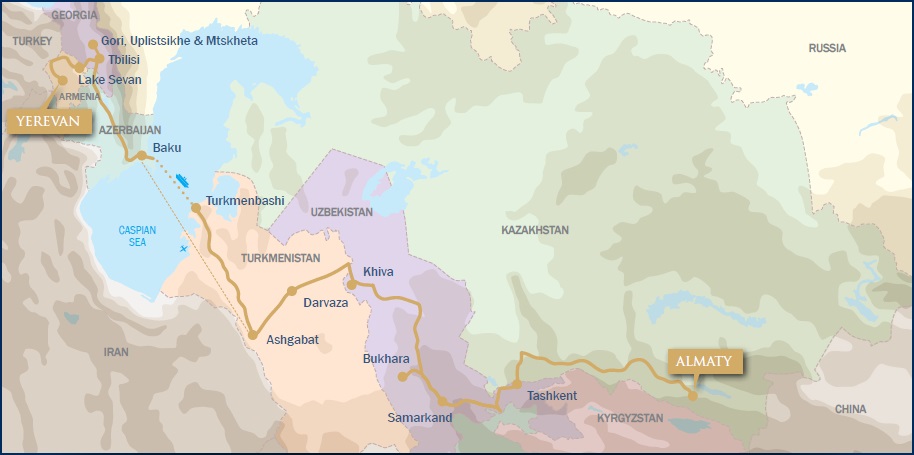A Caspian Odyssey Along the Ancient Silk Road
Overview
The Highlights
- Explore six central Asian countries by a combination of road, private jet and private train — the luxurious, fully en-suite Golden Eagle luxury train;
- Climb Yerevan’s Cascade, a giant stairway providing incredible views of the city and Mount Ararat in the distance;
- Discover Tblisi’s colorful old town, with winding streets and alleyways;
- Take in the 2,500 year-old city of Khiva, now a UNESCO World Heritage Site;
- View Samarkand’s Registan Square, beautifully lit at night;
- Visit Gori, birthplace of Stalin, including a museum of the infamous Soviet dictator;
- See the amazing Darvaza burning crater in the Kara Kum Desert;
- Emir’s Palace of the Moon and Stars, located outside Bukhara;
- Cave city of Uplistsikhe, dating from the 6th century BC.
- Option to begin your journey on the Golden Eagle on Day 9 with a special 8-day tour, Jewels of the Silk Road: Ashgabat to Almaty.
The Tour
From Armenia to Kazakhstan, the captivating Caspian Odyssey journey heads east through a magnificent menagerie of medieval cities, breathtaking archaeological architecture and palatial Islamic masterpieces.
Begin your trip in Yerevan and explore the fascinating South Caucasus region before flying over the Caspian Sea to board the luxurious Golden Eagle train. Travel by luxury train the ancient Silk Road trading route through Turkmenistan, Uzbekistan and Kazakhstan.
Visit the Georgian cities of Tbilisi, Telavi, and Gori, all steeped in history both modern and ancient. Then make your way to Baku, Azerbaijan on the western shore of the Caspian Sea. You’ll visit Ashgabat, the gleaming capital of Turkmenistan, as well as the Uzbekistan gems Khiva, Bukhara, Samarkand, and Tashkent.
This once-a-year tour takes you to places few western travelers have ever seen. There’s no better way to see these historic and otherworldly places!
Read about IRT Vice President of Operations Angela Walker’s Caspian Odyssey.
If you are looking for a shorter journey, you can join the Golden Eagle in Ashgabat and begin your adventure on the exciting new tour: Jewels of the Silk Road. This 8-day option will travel through three of the ‘Stans’ and conclude with a five-star hotel accommodation in Almaty. Please find the prices below for this option.
Itinerary
Day 1: Yerevan, Armenia
Upon arrival at Yerevan International Airport you will be met and transferred to the five-star Alexander Hotel, where we stay for two nights.
Boasting a prestigious central location the Alexander, a Luxury Collection Hotel, is located in the heart of Yerevan’s historic quarter and allows guests a relaxing stay in luxurious surroundings. Even the hotel’s façade with a history dating back to the 18th century presents a unique glimpse into the country’s fascinating past.
For early arrivals to Yerevan, take advantage of an afternoon option to visit the Mother Cathedral of the Armenian Apostolic Church, often referred to as the Vatican of Armenia. Built in 301 AD, Etchmiadzin is considered the oldest cathedral in the world. Also visit the Treasury Museum of Etchmiadzin. The exhibition showcases important Christian relics, such as the pieces of the True Cross, a fragment of Noah’s Ark, and the Holy Spear which pierced the body of Christ. After Etchmiadzin, we make a brief stop at the UNESCO World Heritage Site Zvartnots Cathedral. Built in the 7th century, the cathedral features a unique circular shape. Finally, we make a stop at the Tsitsernakaberd Memorial an expansive complex built to honor the 1.5 million Armenians killed by genocide during the 20th century.
Tonight we enjoy a Welcome Dinner at our hotel whilst you meet your fellow travelers and look forward to the journey ahead.
Day 2: Yerevan, Armenia
The Yerevan skyline is dominated by Mount Ararat in nearby Turkey, with its snow-covered peak towering in the distance. Yerevan has a rich history and was occupied as early as 6,000 BC. The fortress of Erebuni was erected there in the 8th century BC. Seized by a succession of conquerors, the city later passed back and forth between the Turks and the Persians until 1827, when it was taken by Russia. It became the capital of Soviet Armenia in 1920 and following the demise of the Soviet Union, the capital of the new nation of Armenia.
Our day’s touring will take us 23 miles (37 km) out of Yerevan to the ancient Geghard Monastery. The beautiful monastery contains a number of churches and tombs, many of them cut into the rock. The complex of medieval architecture is set into a landscape of great natural beauty, surrounded by towering cliffs at the head of the Azat Valley.
We’ll also visit the 1st Century pagan temple of Garni, built to worship the Sun God Mitra. We’ll explore the remains of an ancient fortress, palace and baths there. Lunch will also be taken at this stunning location.
This evening we head to the Armenia Wine Company, located close to Yerevan. Here we have opportunity to explore the entire process of Armenian wine making technology, walk through the factory cellars, learn about the evolution of Armenian wine making history at the special museum and try the premium wines followed by authentic and exclusive dinner.
Day 3: Yerevan & Lake Sevan, Armenia
This morning we will visit The Cascade, a giant stairway made of limestone. The stairs afford visitors unobstructed views of central Yerevan and Mount Ararat in the distance. Located inside the staircase is the Casfesjian Museum of Modern Art, where we make a short visit.
Leaving Yerevan, our journey takes us to Lake Sevan, where we stop for lunch with stunning views. Along with Lake Van and Lake Urmia, Sevan was considered one of the three great lakes of the historical Armenian Kingdom, collectively referred to as the Seas of Armenia; it is the only one within the boundaries of today’s Republic of Armenia.
After lunch we continue our way, by coach, to Armenian-Georgian border in Bagratashen, first driving through the spa town of Dilijan, well known for its forest landscapes and medicinal mineral water. We make a coffee & brandy stop at Avan Dzoraget Hotel, nestled amongst the forest-covered hills and rocky slopes of the Caucasus Mountains.
This evening we arrive into the Georgian capital of Tbilisi, where we stay for the next three nights at the Marriott Hotel.
Day 4: Tbilisi, Georgia
Heading into Georgia, we visit Tbilisi. Hemmed in by the Surami Range, the city extends for 17 miles (27 km) along the banks of the River Kura. Despite the wars and fires which caused innumerable changes in the topography of Tbilisi, the old part of the city still retains much of its original layout, a spider’s web of narrow winding streets and alleyways.
Historical sites we visit include the 13th-century Metekhi church, a cross cupola church which forms part of the Royal Residential complex, and the 5th century Sioni Cathedral, the main church of Tblisi. We’ll also visit the recently built Holy Trinity Cathedral, one of the largest Orthodox churches in the world, and take a walking tour of the old town and Rustaveli Avenue. Here we will see the Great Hall of the Georgian Philharmonia, built in 1969-71, which has been acknowledged as one of the finest public buildings since the Second World War. We’ll see the treasures of the city housed in the Janashia Museum of Georgia.
Day 5: Gori, Uplistsikhe Cave City and Mtskheta, Georgia
Gori is one of the oldest cities in Georgia, founded in the 7th century AD as Tontio. Joseph Stalin, the Soviet leader, was born here in 1879. The small house where Stalin was born is preserved under a canopy outside the huge columned palace-like building that houses the Stalin Museum. To the side of the museum is Stalin’s private railway carriage. The museum offers a haunting and fascinating insight into a man responsible for more deaths and suffering than any other human being.
The famous cave city of Uplistsikhe dates from the 6th century BC and is first mentioned in the chronicles of the 1st century AD. Carved into rocky plateau we find huge echoing halls, meandering corridor-streets, chambers for pagan worship and even the remains of Georgia’s oldest theatre, complete with auditorium, stage and orchestra pit. Like the other cave-towns of Georgia, it is rooted in the prehistoric traditions of the peoples of the Near East.
Late afternoon, our explorations will take us to the city of Mtskheta, Georgia’s Old Capital. Due to its historical significance and numerous ancient monuments, Mtskheta became a UNESCO World Heritage Site in 1994.
We will also enjoy a private performance of traditional Georgian polyphonic singing – this is an immersive experience which offers a truly unique insight into the beautiful local culture and heritage.
Day 6: Tbilisi, Georgia to Baku, Azerbaijan
This morning we visit a Georgian winery.
After lunch in the city, we board our private jet for the short flight to Baku. Upon arrival we check-in for three nights at the five-star Four Seasons, Baku.
Day 7: Baku, Azerbaijan
Baku, capital of Azerbaijan, lies on the western shore of the Caspian Sea and the southern side of the Apsheron Peninsula, around the wide, curving sweep of the Bay of Baku. The bay, sheltered by the islands of the Baku Archipelago, provides the best harbor of the Caspian Sea, while the Apsheron Peninsula gives protection from violent northerly winds. Baku derives its international importance from its huge oil industry. The core of present-day Baku is the Old Town, or fortress of Icheri-Shekher. Most of the walls, strengthened after the Russian conquest in 1806, survive, as does the 90 ft (27 m) tower of Kyz-Kalasy (Maiden Tower, 12th century). The walled old town is highly picturesque, with its maze of narrow alleys and ancient buildings. These include the Palace of the Shirvan-Shahs, now a museum, the oldest part of which dates from the 11th century. Also of the 11th century is the Synyk-Kala Minaret and Mosque (1078-79).
Other notable historic buildings are the Law Court (Divan-Khan), the Dzhuma-Mechet Minaret, and the mausoleum of the astronomer Seida Bakuvi. Around the walls of the fortress, the regular streets and imposing buildings of modern Baku rise up the slopes of the amphitheater of hills surrounding the bay.
Day 8: Baku, Azerbaijan
This morning we offer a Freedom of Choice tour to Gobustan Rock Art Cultural Landscape. Located 40 miles (64 km) from Baku on the west bank of the Caspian Sea, Gobustan is an outstanding archaeological site of more than 6,000 pre-historic rock engravings. The area also features the remains of inhabited caves, settlements and burials. This is followed by lunch overlooking the Caspian Sea.
Returning to the city in the afternoon, you can choose to enjoy free time in the city or visit a local theatre. Dinner will be held in a traditional local restaurant this evening.
Day 9: Baku to Ashgabat , Turkmenistan
Following breakfast we rejoin our private jet for a flight to Ashgabat. The capital of Turkmenistan is known as the ‘Las Vegas of the Kara Kum’. Situated between the Kara Kum desert and the Kopet Dag mountain range, Ashgabat is a relatively modern city built upon the ruins of the Silk Road city of Konjikala and the Soviet city built after the devastating earthquake of 1948. The city’s extravagant fountains, golden domes and towering modern buildings appear strangely incongruous in this desert setting.
Upon arrival we will board the Golden Eagle. Once settled into our cabins, lunch will be served in the Restaurant Cars. This afternoon we will explore Ashgabat. Highlights includes visits to the National Museum and Wedding Palace.
*For travelers who have booked the Jewels of the Silk Road journey, your adventure begins today.
Day 10: Ashgabat and Darvaza Gas Crater, Turkmenistan
A further morning of touring in Turkmenistan features a visit to nearby Nisa, an ancient settlement of the Parthians, and was declared as a UNESCO World Heritage Site in 2007.
The Golden Eagle departs Ashgabat at lunch and makes a scheduled stop tonight at Ichoguz. We leave the train and make a short journey to Darvaza’s famous burning gas crater, a spectacular sight best seen at night. Located in the middle of the Kara Kum desert where the area is rich in natural gas, the 70-meter-wide crater is known by the locals as the ‘Door to Hell’ and has been burning for over 40 years. It is a unique experience that is not to be missed.
Day 11: Khiva, Uzbekistan
Crossing the border into Uzbekistan, our train arrives to the ancient city of Khiva. As one of the Silk Road’s most important trading posts and now a World Heritage Site, it lies at the crossroads of the routes between Mongolia, Russia, China and Persia. A truly magnificent sight to behold, it rises out of the desert to reveal a wealth of impressive architecture. Stepping back in time, we discover its impressive mosques, bazaars and minarets within Khiva’s ancient walls.
Day 12: Bukhara, Uzbekistan
Bukhara is quite simply outstanding. Like Khiva, UNESCO sponsored the renovation of much of the city for its 2,500th anniversary in 1999. The most enjoyable aspect of this city is to just immerse oneself in the atmosphere of this unique and ancient city and re-live some of its fascinating history at the crossroads of Asia.
The main highlight of this wonderful tour is a visit to The Ark, a fortified residence of the Emirs of Bukhara – the despotic and ruthless leaders who ruled until Soviet times. We then travel out of the city to experience the Emir’s enchantingly named, ‘Palace of the Moon and Stars’.
This evening, weather permitting, we will enjoy a barbecue on the station platform before our train departs – a unique farewell to an incredible city.
Day 13: Samarkand, Uzbekistan
Just the mention of Samarkand instantly conjures up evocative images of the Silk Road, more so than any other town. Founded in the 6th century BC, Samarkand’s stunning architecture hints at its former status as one of the most important cities in Asia and is particularly noted for its architectural remains from the 14th to the 17th century, when it flourished as the fabled capital of the Mongol empire of Timur and his successors.
Today we will visit some of its most significant sites including Registan Square, the refined elegance of the beautifully proportioned Bibi Khanum Mosque and the Ulag Beg observatory, one of the earliest Islamic astronomical observatories built in 1428.
Prepare for an unforgettable evening in Samarkand. As the sun sets and night descends upon this ancient city, we will whisk you to the illuminated Registan Square, where an extraordinary spectacle unfolds. From your prime front-row seats, you’ll be treated to a dazzling light show that weaves the rich tapestry of Samarkand’s history and significance.
Day 14: Tashkent, Uzbekistan
Tashkent is the capital city of Uzbekistan and we spend time touring this modern Soviet-style city which was rebuilt following the devastating earthquake of 1966.
Our tour of the city includes the Old Town, where traditional homes and religious buildings line the narrow streets and here in a small library we’ll be privileged to see one of Islam’s most sacred relics – the world’s oldest Koran. This is followed by a visit to the Railway Museum and the Museum of Applied Arts.
This evening we enjoy our Farewell Dinner onboard the Golden Eagle as we head overnight to our final destination of Almaty.
Day 15: Almaty, Kazakhstan
This morning we arrive into Almaty, our final destination. We bid farewell to the Golden Eagle as we disembark in Almaty.
Today we will take a tour of the city, including a visit to Panfilov Park, located in the heart of the city, and home to the Zenkov Cathedral, a 19th-century Russian Orthodox Church made entirely of wood.
Overnight we stay for one night at the InterContinental Almaty hotel, or similar.
Day 16: Almaty, Kazakhstan
Following breakfast you will be transferred to Almaty Airport for your onward flight.
Dates & Prices
2024 Dates
September 21 - October 6
| ACCOMMODATION | DOUBLE | SINGLE | DEPOSIT |
|---|---|---|---|
| Silver Class | $28,095 | $42,195 | $1,750 |
| Gold Class | $35,195 | $57,995 | $3,000 |
| Imperial Suite | $57,695 | $115,295 | $6,000 |
- Prices are per person.
2025 Dates
September 12 - 27
| Accommodation | Double | Single | Deposit |
|---|---|---|---|
| Silver Class | $28,095 | $42,195 | $1,750 |
| Gold Class | $35,195 | $57,995 | $3,000 |
| Imperial Suite | $57,695 | $115,295 | $6,000 |
- Prices are per person.
- 2025 prices are preliminary and are subject to change.
2026 Dates
September 12 - 27
| Accommodation | Double | Single | Deposit |
|---|---|---|---|
| Silver Class | $28,095 | $42,195 | $1,750 |
| Gold Class | $35,195 | $57,995 | $3,000 |
| Imperial Suite | $57,695 | $115,295 | $6,000 |
- Prices are per person.
- 2026 dates and prices are preliminary and are subject to change.
8-day Jewels of the Silk Road tour, 2024
September 29 - October 6, 2024
| Accommodation | Double | Single | Deposit |
|---|---|---|---|
| Silver Class | $14,095 | $21,095 | $1,750 |
| Gold Class | $17,595 | $28,995 | $3,000 |
| Imperial Suite | On request | On request | $6,000 |
- Prices are per person.
8-day Jewels of the Silk Road tour, 2025
September 20 - 27, 2025
| Accommodation | Double | Single | Deposit |
|---|---|---|---|
| Silver Class | $14,595 | $21,995 | $1,750 |
| Gold Class | $18,895 | $31,195 | $3,000 |
| Imperial Suite | On request | On request | $6,000 |
- Prices are per person.
- 2025 dates and prices are preliminary and are subject to change.
Book Your Journey
Reviews From Our Travelers
Your knowledge, experience, and intuition about what constitutes a trip of a lifetime was a hundred percent on target. Thank you again Eleanor Flagler Hardy for all that you've done for my experience and all you will do for others. You are a Gem.
Excellent! They took care of every detail and made sure we didn’t had any inconvenience at any time. Their hard work and personal attention to every detail was obvious. In a complicated country like India, they made sure we had the maximum enjoyment in every place we visited. Their professionalism and hard work assured it was an unforgettable experience.
I cannot praise Eleanor Hardy's company highly enough. She took care of all the planning, paying attention to every detail and thus this trip was smooth running and fabulous. I hope to travel with this company again.
More
Travel visas may be required for Armenia, Georgia, Azerbaijan, Turkmenistan, Uzbekistan and Kazakhstan, depending on your nationality.
Inquire About This Journey
For dates and prices, please click here.
Questions? Our experienced luxury rail travel consultants are ready to help.
